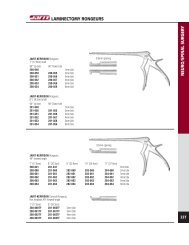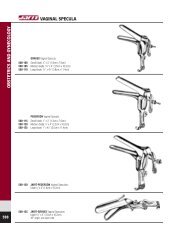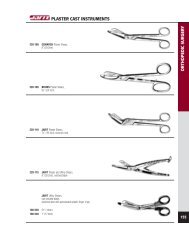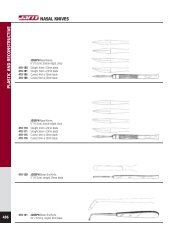AquaShape LipoCollector™ Instructions for use
AquaShape LipoCollector™ Instructions for use
AquaShape LipoCollector™ Instructions for use
Create successful ePaper yourself
Turn your PDF publications into a flip-book with our unique Google optimized e-Paper software.
Human Med AG<br />
<strong>Instructions</strong> <strong>for</strong> <strong>use</strong> and processing of the LipoCollector TM<br />
<strong>Instructions</strong> <strong>for</strong> extraction of lipocytes<br />
Page:<br />
Vers./Date:<br />
16 of 20<br />
1 / 15.07.2008<br />
ATTENTION: The following recommendations are based on <strong>use</strong>rs’ experience <strong>for</strong> other <strong>use</strong>rs.<br />
No guarantee can be given of successfully carrying out fat extraction during liposuction due to<br />
various biological and methodological factors.<br />
We are grateful <strong>for</strong> any in<strong>for</strong>mation that would improve these recommendations.<br />
Level of fluid above the filter<br />
The principle of the LipoCollector TM is that there is an initial separation of liquid and lipocytes<br />
due to the physical buoyancy. The less dense fat floats on the liquid which is concurrently and<br />
continuously suctioned off. In doing so the filter is constantly rinsed with liquid which prevents<br />
the filter mesh becoming blocked. Only near the end of lipocyte extraction, when the minimal<br />
remnant liquid beneath the fat mixture is being suctioned off, does the full function of the filter<br />
come into play.<br />
ATTENTION! In order to achieve optimal filtration there should always be liquid above the<br />
filter. There<strong>for</strong>e:<br />
• Fill the collection container be<strong>for</strong>e the liposuction with sterile isotonic saline up to the<br />
400 ml mark on the container scale.<br />
• Only switch the suction on when you begin with the liposuction itself (no ‘empty run’)<br />
• Do not shake or swing the LipoCollector TM .<br />
Selection of filters<br />
NOTE: The correct filter size depends on a variety of factors and must there<strong>for</strong>e first be roughly<br />
determined in a test run (see also safety in<strong>for</strong>mation, p. 4).<br />
In the test run a fine filter with a 250 µm mesh size should first be <strong>use</strong>d.<br />
Filtration is optimal when no significant amount of liquid backs up above the filter and<br />
simultaneously no lipocytes are sucked past the filter. A filter of the appropriate size is selected<br />
based on necessity.<br />
Ensure gradual pressure reduction<br />
During operation of the LipoCollector TM an abrupt reduction in pressure in the system should be<br />
avoided. If the system is opened on the patient's side, the atmospheric pressure ca<strong>use</strong>s a large<br />
drop in pressure, which can lead to knocking of the suction hose and powerful injection of the<br />
aspirate with great <strong>for</strong>ce, which can damage the filter mechanism.<br />
There<strong>for</strong>e please note the following points:<br />
• Release the bypass hole of the cannula slowly (rolling movement of the thumb)<br />
• Do not pull the cannula abruptly from the incision (with existing vacuum)<br />
• Only <strong>use</strong> the original reducer (connector “Patient” on the container lid)<br />
ATTENTION! If, during extraction of the patient's own fat, the fat suction is interrupted <strong>for</strong><br />
more than 15 seconds, switch off the suction pump or reduce the negative pressure to 0. If no<br />
liquid flows too much cell material can be suctioned off, causing blockage of the fine filters.







